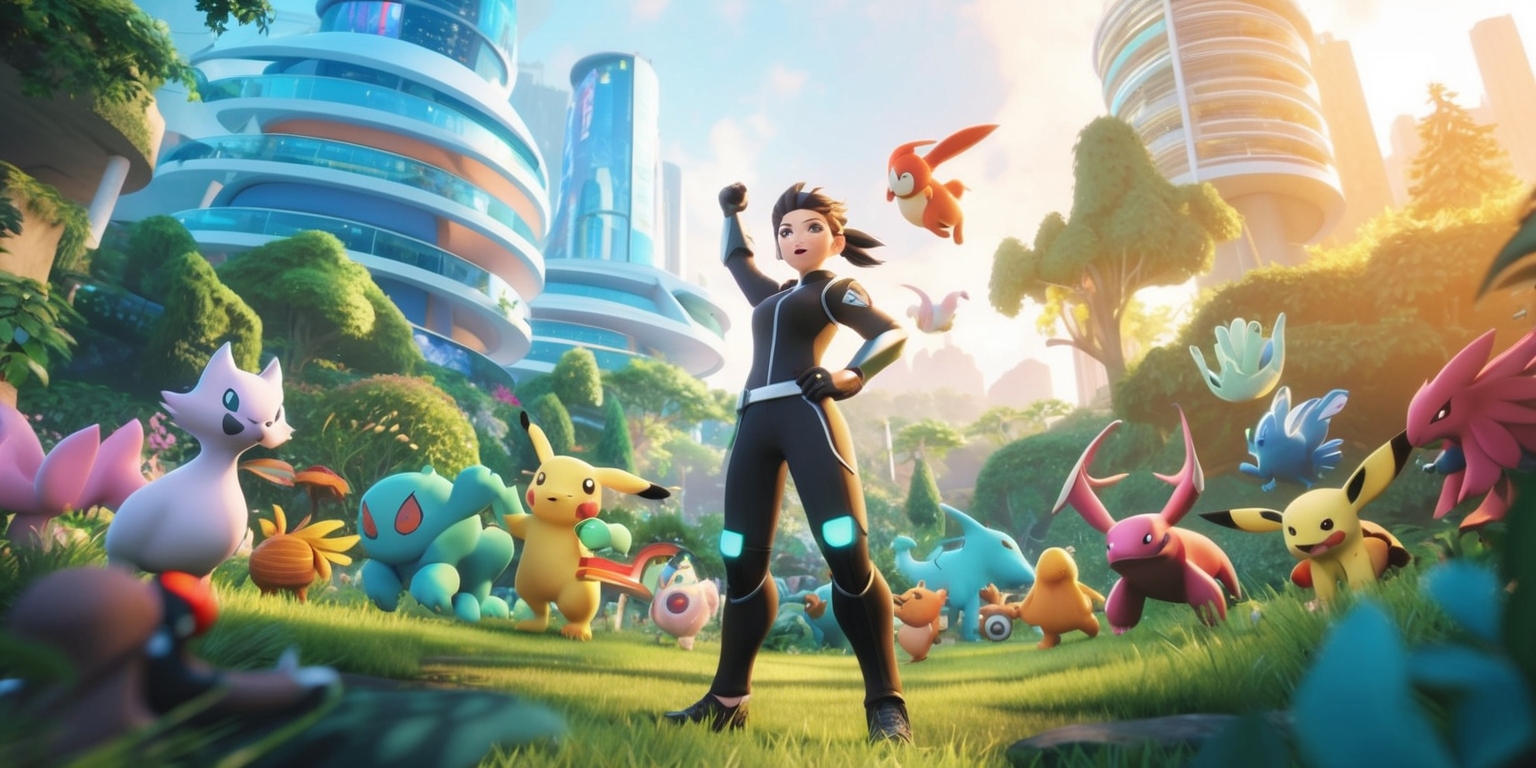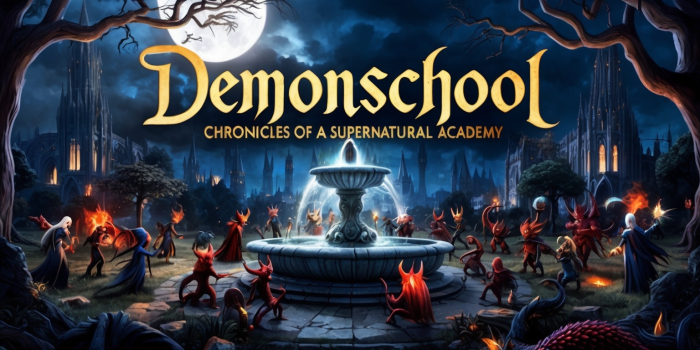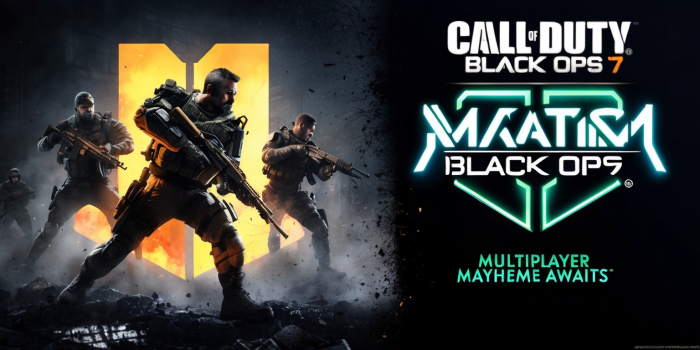 2025-10-20 05:09:51
2025-10-20 05:09:51
Urban Nexus: Mastering the Wild Frontiers of Zone 6 in Pokémon Legends: Z-A
In the immersive world of Pokémon Legends: Z-A, players are invited into a dynamic realm where tactical planning meets boundless exploration. The adventure in Wild Zone 6 unfolds with hidden twists and careful placements of formidable creatures. Every step through this territory is a lesson in precision and adaptability, revealing secrets that enhance both gameplay and storytelling. The environment buzzes with life, each corner promising unique encounters and challenges, making it essential for trainers to navigate wisely and build versatile teams. The journey ahead is peppered with opportunities to refine strategy, and every decision shapes how one interacts with the wild ecosystem that is at the heart of this thrilling adventure.
Mapping the Urban Enigma
The geography of Wild Zone 6 is an intricate blend of urban surroundings and natural edges that sits in the northeast corner of Lumiose City. This sector is strategically placed along the northern bank of the Saison Canal, which provides ample avenues for exploration and engagement. The layout invites trainers to approach the area with a cautious blend of curiosity and tactical planning. Whether stepping in through Jaune Sector 11 from the north or opting to traverse the bridge from In the southern region, every pathway unveils its own distinct charm details and hidden features. The urban vibe established here sets the tone, with buildings and water bodies intertwining to create a living, breathing canvas for adventure without ever compromising the sense of unpredictability that drives the game forward.
Pathways and Passageways
Getting to Wild Zone 6 is not merely a matter of travel, but of appreciating the carefully designed entry points that blend seamlessly with the cityscape. Players can approach from multiple directions, each route offering a chance to experience diverse urban features. The northward entry through Jaune Sector 11 frames the wild area against the backdrop of industrial aesthetics, while coming from the south—whether by crossing above or below the bridge—imbues the journey with contrasting vibes of fluid motion and calm reflection. Fast travel also plays a pivotal role, with Café Bataille serving as a prime relay point, ensuring that even in a large and complex city, the integration of modern transit mechanisms remains fluid and accessible.
Timing the Unleashing of New Challenges
Unlocking Wild Zone 6 comes at a crucial stage in the game, marking an inflection point in a trainer’s journey. Unlike some earlier stages, this zone is gated behind progress in the main storyline, specifically opening up once Main Mission 6 is reached. This timing ensures that players are not only better prepared in terms of in-game accomplishments but also armed with a more refined strategy and team composition. The controlled release of challenges through mission progression adds a layer of narrative depth, as every new sector is a reward for sustained effort. The integration of mission-based unlocking also balances the exploration experience with a gradual increase in difficulty, inviting players to appreciate the narrative as much as the gameplay innovations.
Lively Encounters with a Multifaceted Bestiary

Wild Zone 6 plays host to a curated collection of seven distinct wild Pokémon, providing trainers with a vibrant array of encounters and challenges. The assortment is rich in type diversity, ensuring that each encounter comes with its own tactical considerations. This zone does more than merely pit players against generic enemies; the variety encourages trainers to build teams that are agile and adaptable. Each creature’s presence is a call to explore type advantages and strategic synergies within the party. Amidst these wild encounters, the environment itself tells a story of balance and unpredictability, inviting trainers to hone their skills and adapt their strategies as they face both familiar favorites and unexpected surprises that add layers of challenge.
A Dance with the Enhanced Guardians
The presence of Alpha Pokémon in Wild Zone 6 raises the stakes significantly, as these enhanced creatures challenge even seasoned trainers. The area features no less than three Alpha Pokémon, each presenting a unique threat that calls for a well-thought-out approach. One of these creatures, in particular, demands extra caution due to its high-level nature and tactical cunning, setting the pace for a thrilling combat experience. The enhanced battle dynamics introduce an important twist: while the standard wild encounters are challenging on their own, the augmented abilities of Alpha Pokémon necessitate a deeper understanding of move sets and type advantages. This blend of increased difficulty and diversity creates a pulse-quickening environment that is both rewarding and demanding.
Strategic Selection: Building a Resilient Team
The diversity among wild Pokémon in this zone opens up strategic avenues for team customization. Specific species like Meditite and Houndour not only serve as great additions on their own but also boast solid evolutionary lines that eventually include Mega Evolutions. Incorporating these creatures can be particularly advantageous in a contest of wits and might within the wild territories. Similarly, Swablu offers an opportunity to harness Dragon-type attacks, which can be a strong counterbalance in battles that test both skill and strategy. The selection of team members in Wild Zone 6 is not just about confrontation—it is about creating a harmonious ensemble that leverages type strengths and available evolutions, Establishing the foundation for a comprehensive and robust adventure.
Exploring Hidden Nooks and Visual Splendors
The visual aesthetics of Wild Zone 6 bring forth a compelling mix of urban design and natural elements that stand as a testament to detailed game architecture. Within the expanse of this territory, players find themselves traversing city corners, viewing the dynamic interplay of architectural silhouettes against the fluid backdrop of the Saison Canal. Both the ambient lighting and the careful juxtaposition of old and modern designs contribute to an alluring narrative where each building and pathway tells its own story. Furthermore, the integration of environmental factors such as water reflections and shadowed alleys adds layers to the exploration experience. The intricate detailing is designed to ensure that every encounter and every walkthrough keeps visual engagement at its peak, enhancing the immersive excitement of the wild expedition.
Mechanics of Movement and Level Strategy
Wild Zone 6 is not just a static battleground but a dynamic stage that demands skillful navigation and thoughtful planning. The recommended level for safely engaging with this area hovers around Level 15, yet the presence of high-level challenges requires constant vigilance from trainers. Movement mechanics are further enriched by the incorporation of urban transit options, allowing for strategic retreats and re-engagements. Each maneuver within the zone is predicated on understanding the layout and anticipating enemy responses. This deliberate pacing is woven into the gameplay, compelling trainers to refine their approach continuously. Balancing aggressive tactics with careful positioning becomes crucial. As a result, players are encouraged to evolve not only their teams but also their mental strategies to master the intricate dance that is combat and navigation within this urban wild zone.
Urban Mythos and In-Game Landmarks
Wild Zone 6 is dotted with several landmarks that are pivotal to the unfolding narrative and gameplay mechanics. Among these, the Café Bataille stands out as a central hub for fast travel, providing a familiar reference point amid the maze-like urban sprawl. These landmarks serve as both navigational aids and integral components of the game’s lore. The careful placement of such points of interest ensures that trainers remain grounded even while immersed in the deeper exploration of wild territories. Interwoven within the fabric of the game is a network of paths that connect various locales, each contributing to the larger narrative of adventure, strategy, and the thrill of discovery. The coexistence of bustling transit nodes with serene side alleys enriches the player’s intuitive understanding of the game world.
Dynamic Combat and Adaptive Gameplay
The combat encounters in Wild Zone 6 highlight an adaptive system that challenges players to constantly adjust their tactics. More than simply relying on a fixed roster of moves, trainers must consider the interplay between different Pokémon types and their corresponding strategies. Battles become dynamic puzzles where each action can lead to unexpected outcomes. The presence of diverse and strategically varied wild Pokémon means that relying on a single type of attack is often not enough. Trainers are pushed to experiment with moves, pairings, and even positional tactics during encounters with both standard and enhanced foes. With this continuous demand for innovation and recalibration, the gameplay in Wild Zone 6 remains ever-engaging and far from predictable, urging trainers to consistently refine their in-game mastery.
Bridging the Gap Between Challenge and Reward
The careful design of Wild Zone 6 bridges the gap between momentary challenges and long-term rewards. By requiring players to unlock the zone After attaining a key benchmark in the core… mission, the game cleverly integrates narrative progression with gameplay difficulty. This measured introduction means that trainers are better equipped with skills, strategies, and a more powerful team before facing the wild encounters that lie ahead. Each battle fought and each strategic adjustment made in this zone contributes to a broader sense of progression. The rewards, whether in the form of evolved Pokémon or enhanced tactical acumen, are deeply integrated into the overall adventure. This design philosophy is a testament to the nuanced interplay between risk and reward that defines the wild and unpredictable persona of Wild Zone 6.


